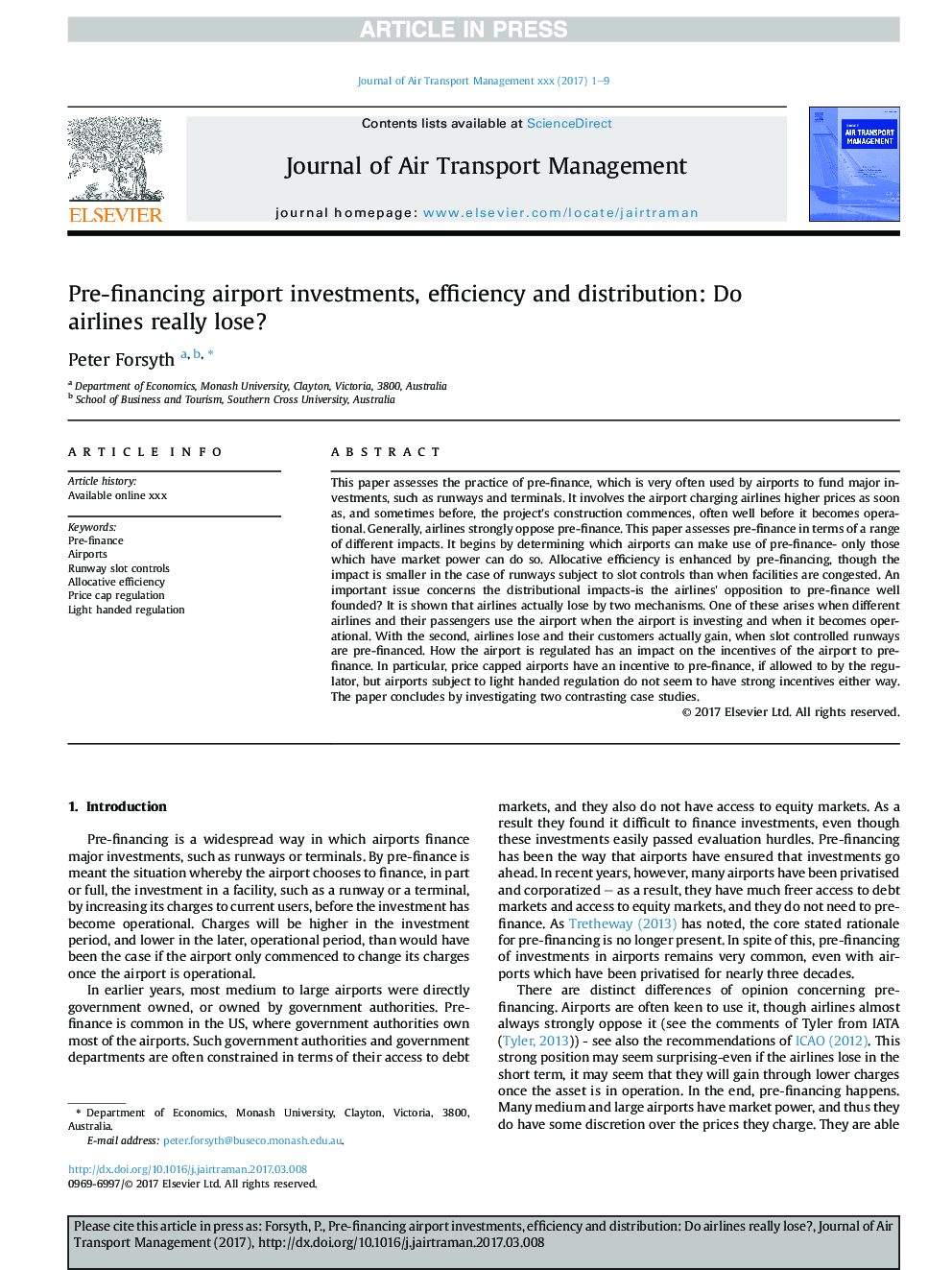| Article ID | Journal | Published Year | Pages | File Type |
|---|---|---|---|---|
| 7435227 | Journal of Air Transport Management | 2018 | 9 Pages |
Abstract
This paper assesses the practice of pre-finance, which is very often used by airports to fund major investments, such as runways and terminals. It involves the airport charging airlines higher prices as soon as, and sometimes before, the project's construction commences, often well before it becomes operational. Generally, airlines strongly oppose pre-finance. This paper assesses pre-finance in terms of a range of different impacts. It begins by determining which airports can make use of pre-finance- only those which have market power can do so. Allocative efficiency is enhanced by pre-financing, though the impact is smaller in the case of runways subject to slot controls than when facilities are congested. An important issue concerns the distributional impacts-is the airlines' opposition to pre-finance well founded? It is shown that airlines actually lose by two mechanisms. One of these arises when different airlines and their passengers use the airport when the airport is investing and when it becomes operational. With the second, airlines lose and their customers actually gain, when slot controlled runways are pre-financed. How the airport is regulated has an impact on the incentives of the airport to pre-finance. In particular, price capped airports have an incentive to pre-finance, if allowed to by the regulator, but airports subject to light handed regulation do not seem to have strong incentives either way. The paper concludes by investigating two contrasting case studies.
Related Topics
Social Sciences and Humanities
Business, Management and Accounting
Strategy and Management
Authors
Peter Forsyth,
